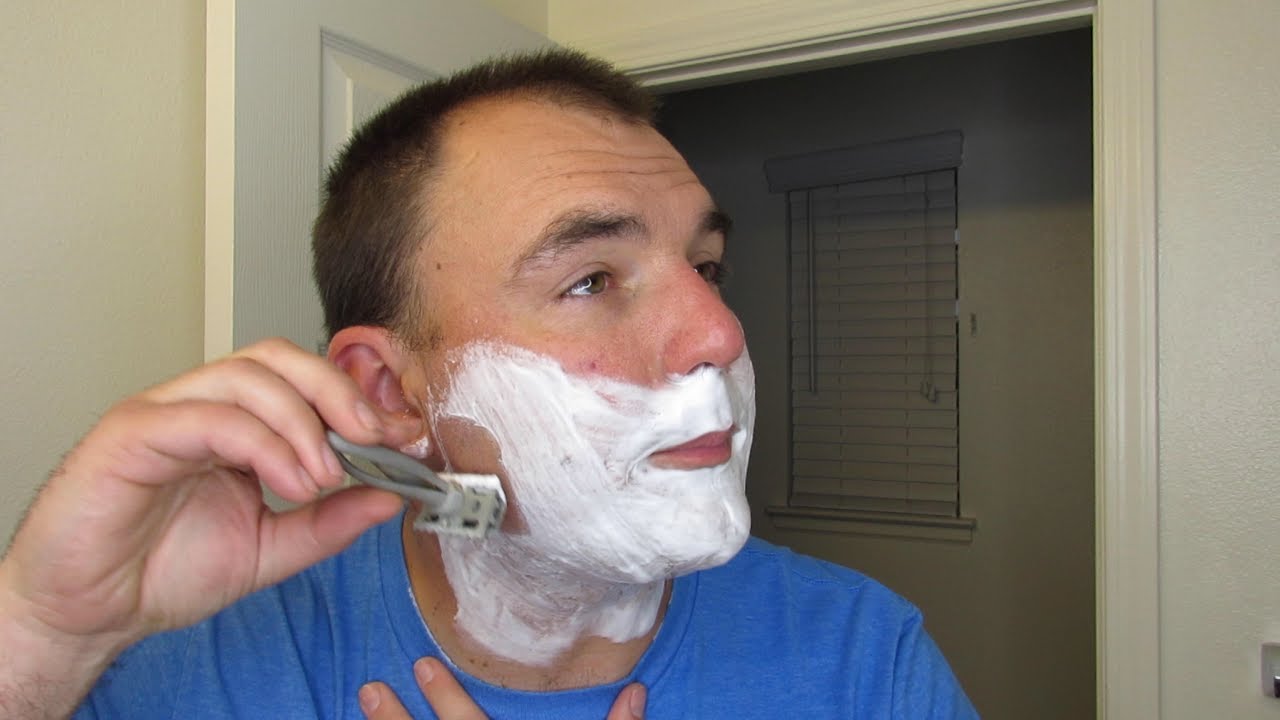In shaving, grain refers to the direction of your beard growth. Just check your beard out in front of a mirror. You will notice the different directions each section of your beard grows. Typically, the beards above your lips and on your side cheeks grow downwards. Normally, your chinstrap curtain goes with your jaw, through to your chin’s tip. While your goatee likely grows in different directions.
What does these say? There is no one-fits-all pattern of beard growth.
Your beard may grow in any direction – there’s practically nothing we can do about it. However, it is helpful to figure out how your beards grow – for a more effective shaving session. Before a shave, decide on which of these two techniques to adopt:
Shaving Against the Grain

When you go against the grain, the razor gets real close to your skin, increasing the chances of a smoother shave.However, shaving against the grain is largely associated with skin irritations which causes redness, bumps, and itching.
Read also: Shave With or Against the Grain
Shaving with the Grain
When you slide your shaver in the direction of your beard growth, you’ll hardly ever get a clean shave. However, this method is more preferred, as it won’t cause irritations typical of shaving against the grain.
The Art of Shaving
Regardless of your preferred shaving option, you need to study the art of shaving. A lot of men end up with aftershave issues – whether with or against the grain.
During an against-the-grain-shave, the blade cuts the follicles from underneath, guaranteeing a near-skin cut. Here, the blade touches the skin before the hair.
However, the result is different when shaving with the grain. With the grain, the blade gets to the hair first, before the skin. For the thick bearded, the blade may have no contact with the skin.
Unfortunately, going with the grain leaves you with some short stubble after shaving.
So, while everyone loves a smoother shave, they fear the irritations shaving against the grain brings.
Now, the question is: would you prefer to shave against the grain if you could prevent those annoying irritations? Most likely, yes.
Do you wish to learn how to shave against the grain without any aftershave reactions? Then, read on
How to Shave Against the Grain Without Irritations

While shaving against the grain gives a smoother cut, it demands familiarity with the learning curve – particularly for straight razor users.
Here are things to know as you walk the path of being a pro at shaving against the grain without causing issues for your skin.
Confirm Your Beards’ Grain
Your hand is the best tool to discover this – a credit card may come handy too. Rub your hand – or credit card – over your beards and find out the direction they grow towards. With a credit card, you’d notice a smooth flow when you come across a surface with the grain. When going against the grain, you’d hear some sounds as the card bushes against the tip of your beards.
Ensure you run this check on each patch of your beards – be detailed. Take note of swirls –they need to be shaven with extra carefulness. Taken note of all the spots?
Wash your face
Don’t skip this – most guys do and get awful results. Regardless of your shaving technique, ensure you wash off all accumulated oil and debris on your skin before you begin a shave. You may use a shampoo, face wash or your regular toilet soap.
Any skin-friendly wash will do – just don’t skip this step. A good wash before you shave is results to a cut-free and pain-free shave experience.
Use pre-shave Oil
After a face wash, you’d expect relative dryness of the surface. Now, your skin’s tightness increases the chances of cuts and bruises during a shave. Besides, the dryness would make the hair thicker and may swirl inwards – towards its root – like an ingrown hair.
However, pre-shave oils will help hydrate both your skin and hairs, making them soft enough for the blade to cut through without much efforts – preventing cuts and scars.
Use a wet Towel
Soak a small towel in warm water. Spread over your face and leave for about 3 minutes. This further softens your facial hairs and causes a separation between your beard and your face. Noteworthy, this step helps kill bacteria responsible for eczema and related facial skin issues.
Lather with a Brush
Do you own a badger or boar brush? No? You’d need one.
Generate lather in a bowl and apply –with your brush – on your beards. No rush – ensure you cover every hair strand on your face. This is the final preparation before the razor begins its part. The brush is considered as a must-have tool for bearded guys. It offers an intensive exfoliation for your facial skin and helps lift your beards away from the skin.
At Last – Make the Cut
Before now, it’s expected you have chosen a preferred blade to use – safety, straight or cartridge razor. Whichever you select – we recommend cartridge razor, to begin though – ensure you maintain a low angle as you shave. When shaving against the grain, your beard becomes coarse so you want to make a close-to-skin cut. This helps reduce the likelihood of rashes and other skin irritations.
Final Notes
Though shaving against the grain gives a smoother cut, still, most people prefer to go with the grain. Why so?
Shaving against the grain leaves your face with a minefield of bumps and scars. Fact is, shaving against the grain is not as scary as people make it seem. Consider the steps above on your next shave and let’s hear your testimonies.
It is however noteworthy that you may have to begin with a straight razor or a safety blade. Having gained enough mastery of these tools, you may move to cartridge or electrical clippers, confidently.